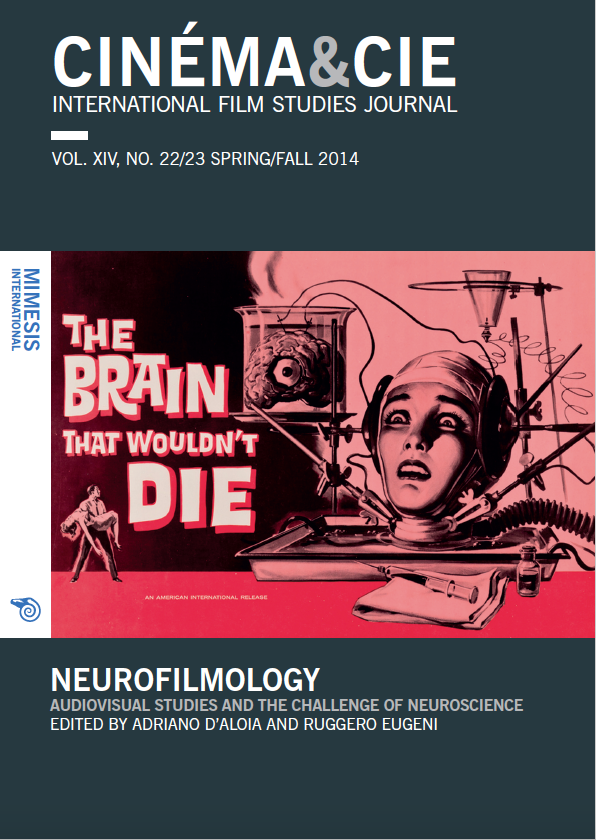Dexter’s Plastic Brain: Mentalizing and Mirroring in Cinematic Empathy
Abstract
This essay revisits the question of empathy in film theory by looking at recent neuroscientific findings on affect, emotion and empathy. In film theory there is a classic division between cognitive approaches toward emotional engagement with characters, based on mentalizing or projecting oneself into the situation of another, and phenomenological approaches, based on a more direct embodied experience of mirroring emotional states of characters on screen. Debates in cognitive and affective neuroscience seem to reconfirm these two dominant views on cinematographic engagement: social and cognitive neuroscience demonstrates how we imagine the experience of others in activating the prefrontal and lateral regions of the cortex in projecting a “Theory of Mind.” Affective neuroscientist have demonstrated that the activation of mirror neurons in different parts of the brain, such as the anterior insula, and middle anterior cingulate, effectuate an immediate embodied emotion. Both in film theory and in neuroscientific debates, these two views are often opposed and presented as mutually exclusive. This article elaborates the emerging view that both forms of emotional simulation have their own validity and work together in a dynamic network with varying degrees of dominance according to the type of dramatic situation. The television series Dexter will be considered as a “neuro-image,” an extended and new form of contemporary cinema and will serve as a partner in dialogue in the development of the arguments.






